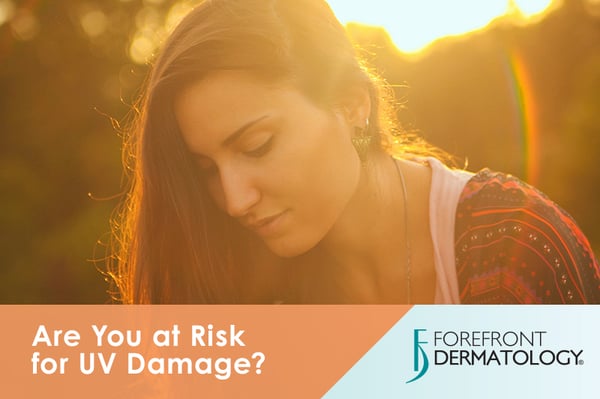
In honor of UV Safety Awareness Month, we’re devoting the entire month of July to shedding light on ultraviolet (UV) radiation. This week, we’re taking a look at the types of people who are most at risk for the adverse effects of UV exposure. For most living organisms, your relationship with the sun is, well, complicated. Literally everything you need to survive depends on its energy – the food you eat, the air you breathe, even the atmosphere that protects you from the endless vacuum of space. Meanwhile said energy (ultraviolet radiation, in particular) is actively trying to destroy you by corrupting your very DNA in the form of skin cancer. It’s an evolutionary opera featuring some high-drama thermodynamics. But life is incredibly resilient. Over millennia, some populations have adapted physiologically to the harmful and helpful effects of UV radiation in their environments, while others must rely on technological and behavioral adaptations to stay healthy and skin cancer-free. Who drew the evolutionary short straw? Generally speaking, those who burn most easily are most at risk for developing skin cancer and experiencing the long-term effects of UV exposure. This includes:
- Fair-skinned individuals; particularly those with freckles
- Those with light-colored hair (blond, red, light brown)
- Those with light (blue or green) eyes
UV damage increases over time. In addition, the effects of UV exposure are cumulative, meaning your risk for developing UV-related skin cancers increases over time – so middle-aged and older individuals are most at risk. In fact, it’s estimated that a quarter or more of cells in the skin of middle-aged people have suffered sun-induced DNA damage. Medication may increase your UV sensitivity. Many common medications are affected by UV rays, causing a photoallergic or phototoxic reaction; among these are antibiotics (tetracycline, sulfas, and quinolones), diuretics (hydrochlorothiazide and furosemide) and NSAIDS (naproxen). This increased sensitivity to sunlight can significantly increase your risk for burning, rashes and other unpleasant skin conditions. Knowing you’re at risk for increased UV damage is the first step to protecting yourself. According to the Centers for Disease Control, although the number of melanoma diagnoses has risen almost 2 percent each year since 2000, only 70 percent of adults and 60 percent of young adults reported regularly using sun protection. “Sun protection is really just a matter of applying some commonsense,” says Dr. Kristine Hess, dermatologist at the Forefront Dermatology clinic in Marion, Ind. “The very best way to protect your skin from the sun is avoidance of midday sun. If that’s not possible, opt for more clothing coverage, find a shady spot and apply sunblock (apply liberally and reapply often). And of course, don’t use tanning beds. Ever. There are plenty of self-tanning products that can give that bronze color you so desire – without the risks of skin cancer and looking like an old crone way before your time.” There’s nothing wrong with enjoying the sunshine, but skin cancer is no day in the park. With routine skin exams and the expert guidance of your Forefront dermatologist, managing your UV damage is more convenient than ever. To find the Forefront physician nearest you, visit the Locations page today.





